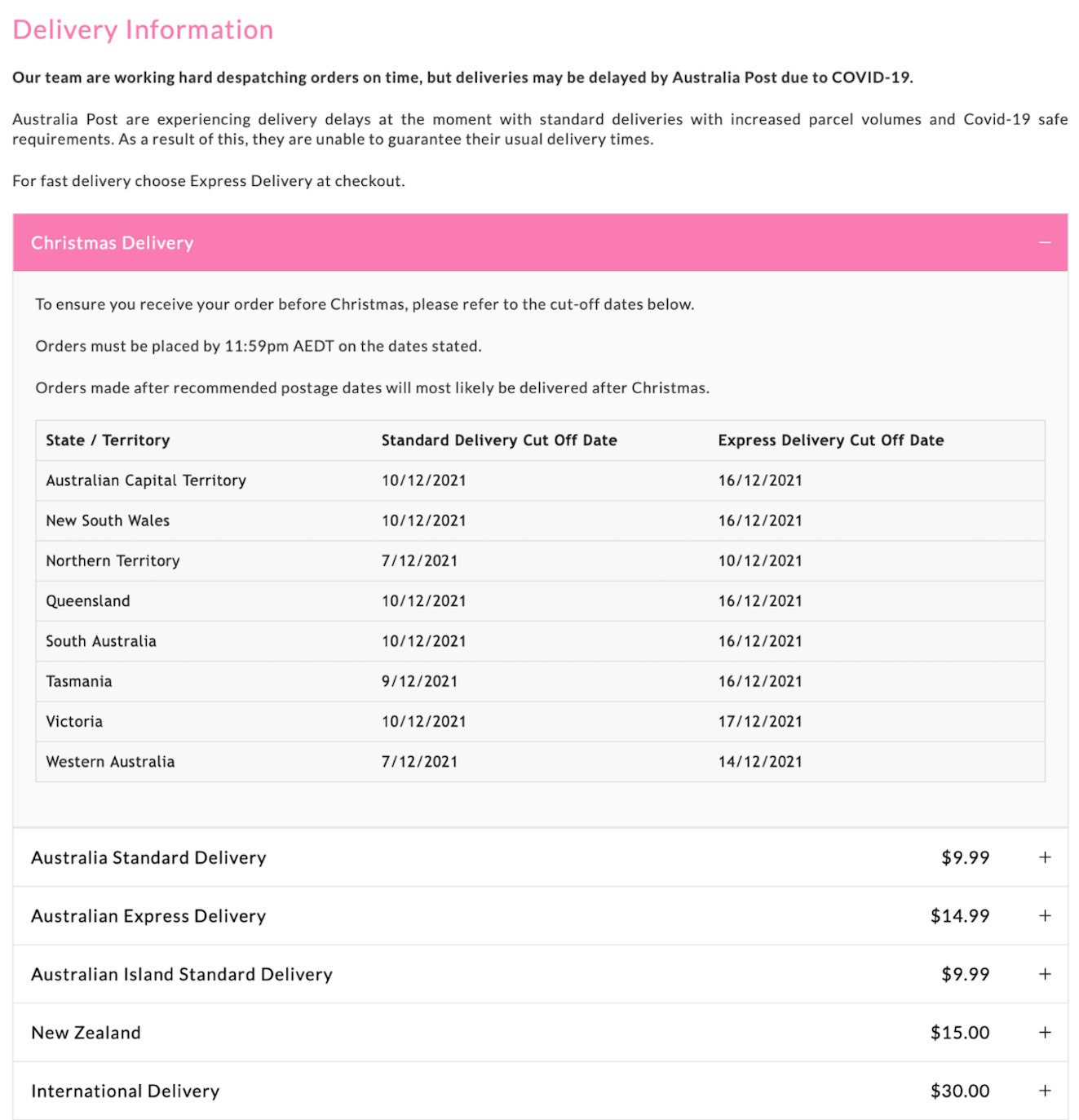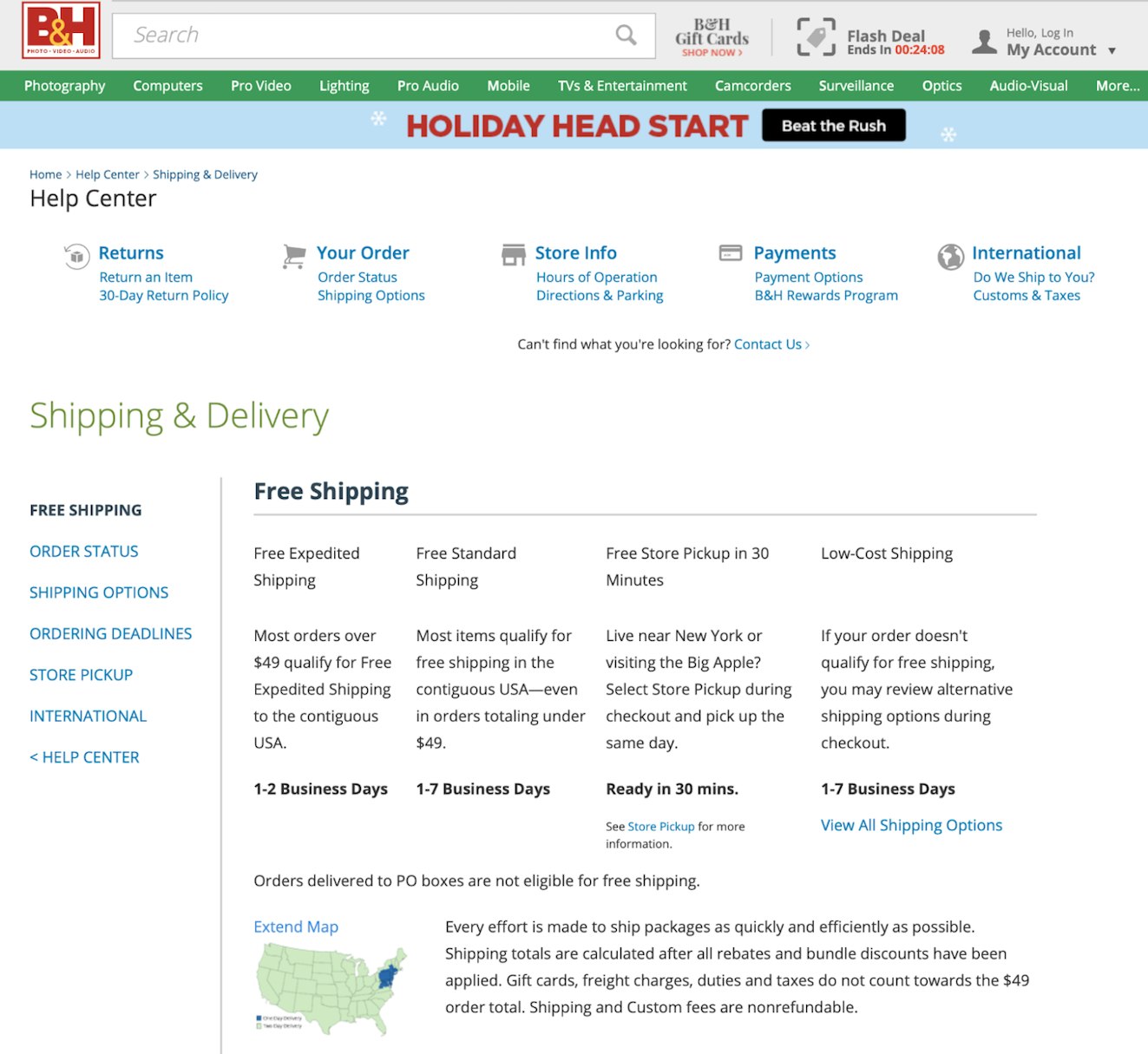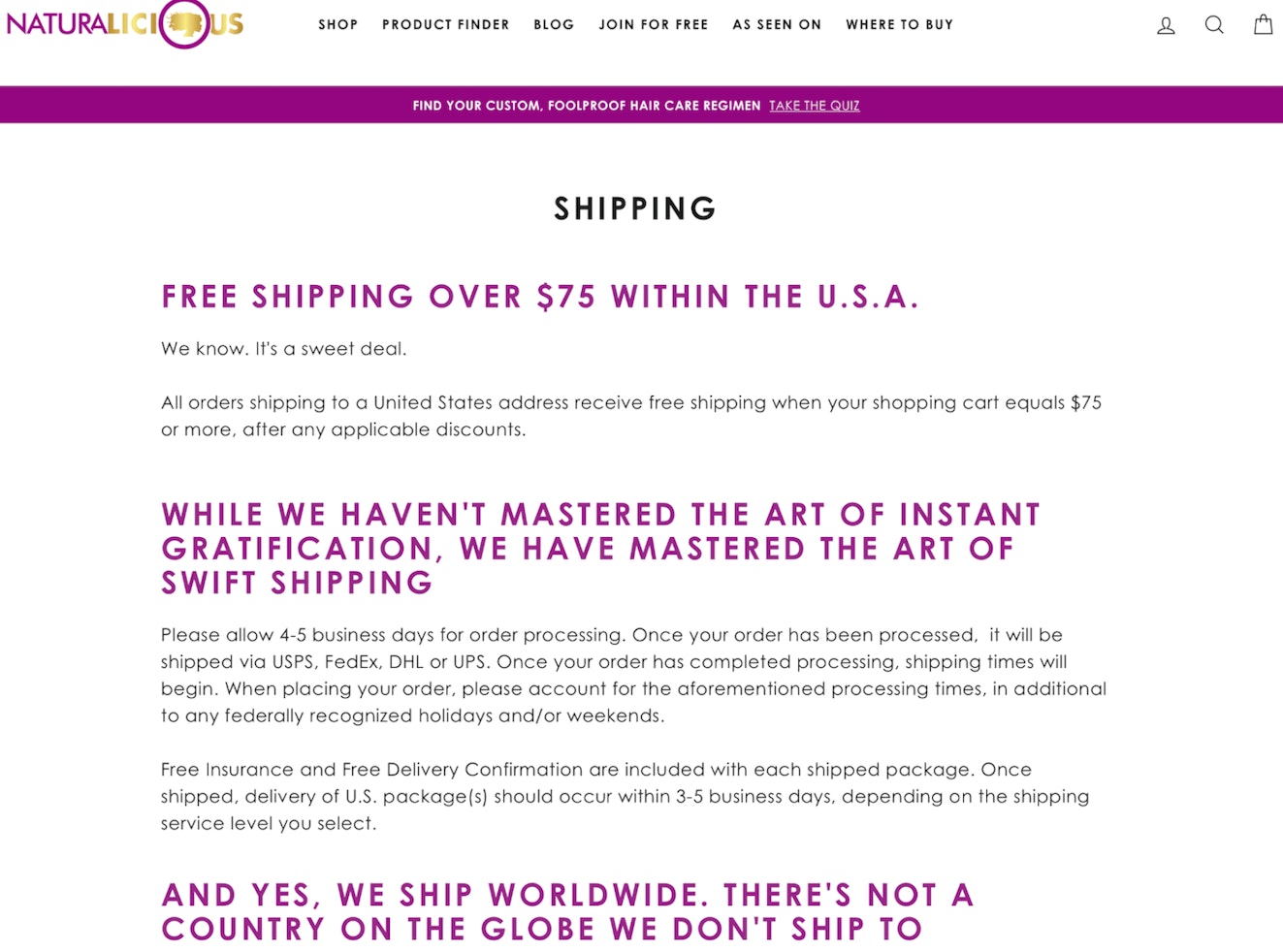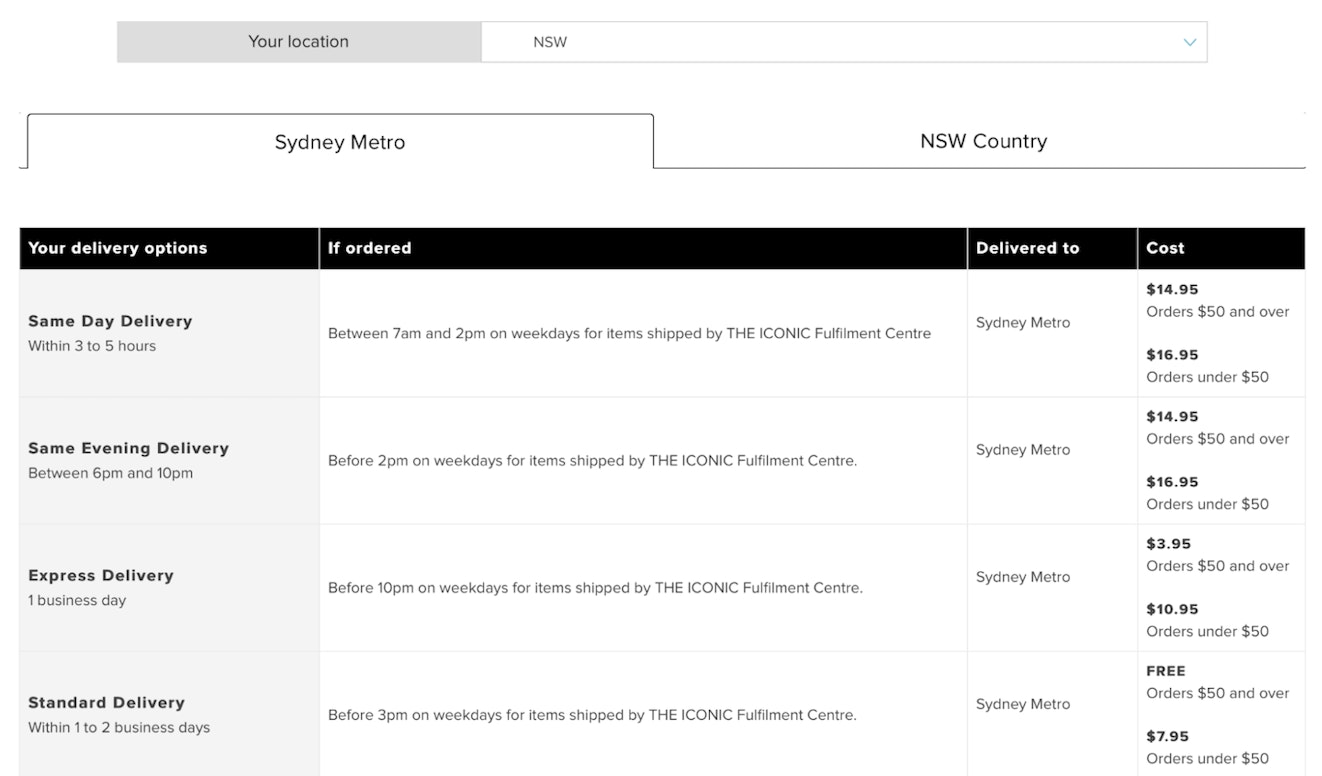Earth is big. Fly from Australia to America, and you can work your way through all the Marvel movies you are supposed to have already watched for “backstory.”
A marginally cheaper way to experience the same feeling is to pay for delivery to Australia from a U.S. store. So as an Aussie, I am sympathetic to people complaining about shipping costs.
Of course, the customer service person on the other end of that complaint typically has no control over shipping costs or policies, making for a frustrating conversation all around.
In this article, we’ll review ecommerce shipping cost complaints and explore some ways to more effectively handle them.
Shipping costs are a critical factor in ecommerce sales
Research consistently shows that shipping costs are a top concern of ecommerce shoppers.
In a review of cart abandonment research, Baymard Institute noted that nearly half of all abandoned purchases were due to non-product costs (e.g., shipping, taxes, and fees). While many customers will walk away without ever speaking to the company, there are plenty who will share their displeasure with customer service staff.
Here are some common causes of shipping price complaints:
Raw cost — Some items are expensive to move because of their size or weight, and there’s no way around it.
Lack of knowledge on shipping costs — Many consumers just don’t understand how expensive shipping is (often because those costs are hidden from them by larger retailers).
Disappointment — When a customer finds the exact thing they need at an acceptable price but later discovers that shipping costs make it unaffordable, that disappointment is understandable.
Mismatched expectations — If a website offers free shipping but the customer’s particular location or product choice does not qualify, those unmet expectations can create problems.
However, the largest cause of shipping cost complaints is also the most basic: that there is any shipping cost at all.
Free shipping: The elephant in the inbox
In a 2015 study by UPS, 77% of shoppers rated free shipping as the most important checkout option, and for 68%, free shipping was a reason to recommend the store to someone else.
Of course, free shipping isn’t really free; it has to be paid somewhere in order for the goods to be transported.
But the psychology of free shipping is a powerful motivator, so the largest online retailers have spent a lot of time and money creating customer expectations of “free” shipping. That expectation has flowed over to smaller ecommerce retailers who are less able to absorb shipping costs.
But that does not mean they have no options for customer satisfaction.
How small ecommerce companies can compete on shipping costs
Even smaller ecommerce stores might have some leeway to reduce shipping costs (real or perceived). While customer service professionals are often not in a position to make those changes, it is worthwhile to have some options to pass on to the people who could make the call:
Include shipping costs in the product price. For a significant number of people, a higher product price with free shipping is consistently more appealing than a cheaper product plus shipping costs, even if the total cost is the same in both cases. Our brains are weird.
Require a minimum order size for free shipping. Research shows people will, on average, spend more in order to qualify for free shipping (as seen in this case study). Setting the right bar can ensure your business still makes a decent profit.
Start a loyalty club. Have customers pay upfront to access some set of customer benefits that includes discounted or free shipping. They may end up spending more in order to extract the value of their club membership.
Review your shipping options. Could you reduce shipping costs through alternate carriers, packaging choices, or shipping rate selection? If it has been a while since you’ve looked, there could be savings to be had.
Sell unique items. If your customers can’t easily buy your exact products elsewhere, shipping costs are less of a differentiator.
Offer local delivery or pickup. Shipping to a local store or offering direct pickup might be a real cost saving for some subset of your customers.
Managing shipping logistics and pricing is far more complex than this article could cover. For some more ideas, this Findify article is helpful, but it is always better to consider options for avoiding the problem before focusing on resolving complaints.
5 tips for responding to shipping cost complaints
Customer service staff may not have the power to waive costs, change shipping providers, or modify the business model of their company, but they can take steps to both reduce the number of shipping cost complaints and handle them more effectively.
1. Show empathy
First, just listen. You’ve probably had the same experience yourself, so you know the disappointment of shipping costs putting a much-wanted purchase out of reach. It’s OK to acknowledge that before moving on to offer help or an explanation.
2. Explain the reasons behind the prices
Often the customer has very little insight into how shipping works, so the price seems unreasonable to them. The simplest explanation (assuming it is true in your situation) is that you are only passing on the actual costs you will incur in shipping the item to them.
Not every shipping service provides the same level of speed, reliability, and coverage, so it can also be helpful to share details about your shipping partners and why you choose to use them. Ideally, you will have a comprehensive shipping policy page published on your site that you can direct customers to for more details.
If a customer is in a more expensive location for you to reach or if they have chosen a product that is more costly to ship, that knowledge is useful to share, too.
3. Provide a direct comparison
Are your shipping prices closely matched to what your competitors offer? That’s useful context for customers, addressing any fears that they are being price gouged. You could also link right to the shipping provider’s page, where they could confirm the base shipping price for themselves.
4. Share your approach
Some customers will be satisfied by understanding why your shipping works the way it does. For example, showing shipping separate to product cost can become part of your customer transparency values.
If you are using more expensive shipping because it results in fewer damaged products, that centers the overall customer experience.
5. Offer alternative options
Wherever possible, offer ways for your customers to either reduce their costs or get more value for their money.
Do you offer discounts at certain times or for certain types of customers?
Are there bundles or bulk purchases to reduce the per-item shipping cost?
Is pickup at a local store an option?
Do you have a similar, lower-cost product alternative?
Answering some shipping complaints one-on-one is inevitable, but you can help some people answer their own questions with a good shipping policy page on your website.
Creating an ecommerce shipping policy page
A shipping policy is a document that details key information about delivery costs, options, timing, and related factors for customers of a given business.
Goals of a shipping policy page
An effective ecommerce shipping policy page should:
Build customer trust. By setting accurate expectations and transparently explaining costs and processes, potential customers can feel more confident about their purchases.
Answer commonly asked questions. Save time for your customers and your service team by sharing answers to recurring questions in an easily accessible location.
Address common objections (and offer alternative options). In addition to factual answers, a shipping page can make an argument to support the specific shipping policies of the business (rather than relying solely on the customer service team to do it one-on-one).
Outline relevant limitations. If you cannot ship certain products or you don’t ship to certain locations, make that clear upfront to reduce frustration.
Your shipping policy should be prominently linked from your ecommerce pages and from any emails you send to your customers and prospects.
What to include on a shipping policy page
Review your customer service history for your most commonly asked questions, and write generalized answers to form the basis of your page. Here are some of the most common items to consider:
What shipping options are available to customers?
Is in-store pickup available?
What delivery costs apply, and how are they calculated?
What additional taxes or duties may apply?
Are there discounts available, and if so, what are the requirements to get them?
What are the typical delivery times for common locations?
What are the delivery cutoff times for upcoming seasonal holidays?
What is the process to follow if a delivery does not arrive?
How and where can delivery tracking be done?
Are there restrictions on delivery types or locations across the board or for certain product categories?
Is international shipping available, and if so, through which carriers?
What handling time applies before the shipping itself can occur?
What is your return policy and return process?
4 example shipping policy pages
If you’re after some inspiration, here are a few well-designed shipping policy pages we’ve found.
Peter Alexander
We like the state-by-state breakdown in their holiday ship date callout.

B&H Photo
They have a whole page for international shipping questions, reflecting their global customer base (and often high-value packages).

Naturalicious
They use a conversational and friendly tone while still including very clear policy restrictions.

The Iconic
A location drop-down menu at the top of the page lets customers quickly see the most relevant information for them.

Ship it good
Until we have reasonably priced Star Trek-style transporters or matter replicators, shipping physical objects around the world will remain a costly and time-consuming exercise, and shipping complaints will continue.
However, you can reduce complaints significantly by making those costs clear and realistic and by setting accurate expectations early for as many of your customers as you can. Be sure to deal with the remaining complaints with empathy, transparency, and grace.
And bring on the replicator, please.





